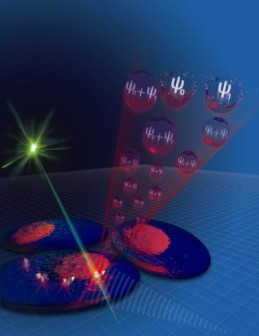Quantum sensor tracked in human cells could aid drug discovery
May 26, 2011

Quantum measurement carried out on a single-atom quantum sensor in a living human HeLa cell (credit: David Haworth)
Researchers at the University of Melbourne School of Physics have encased a single atom in nanodiamond for use as a sensor to explore the nanoscale environment inside a living human cell.
The sensor is capable of detecting biological processes at a molecular level, such as the regulation of chemicals in and out of the cell. This can be used in the development of new drugs and nanomedicine delivery systems.
Encased in a nanodiamond particle, the sensor is controlled by external microwaves and laser light and tracked by its emission of red light.
The researchers developed state-of-the-art technology to control and manipulate the atom in the nanodiamond before inserting it into the human cells in the lab, providing information about the nanoscale environment of the cell and the motion and orientation of the nanoparticle.
Ref: L. P. McGuinness, Y. Yan, et al., Quantum measurement and orientation tracking of fluorescent nanodiamonds inside living cells, Nature Nanotechnology, 2011; DOI: 10.1038/nnano.2011.64